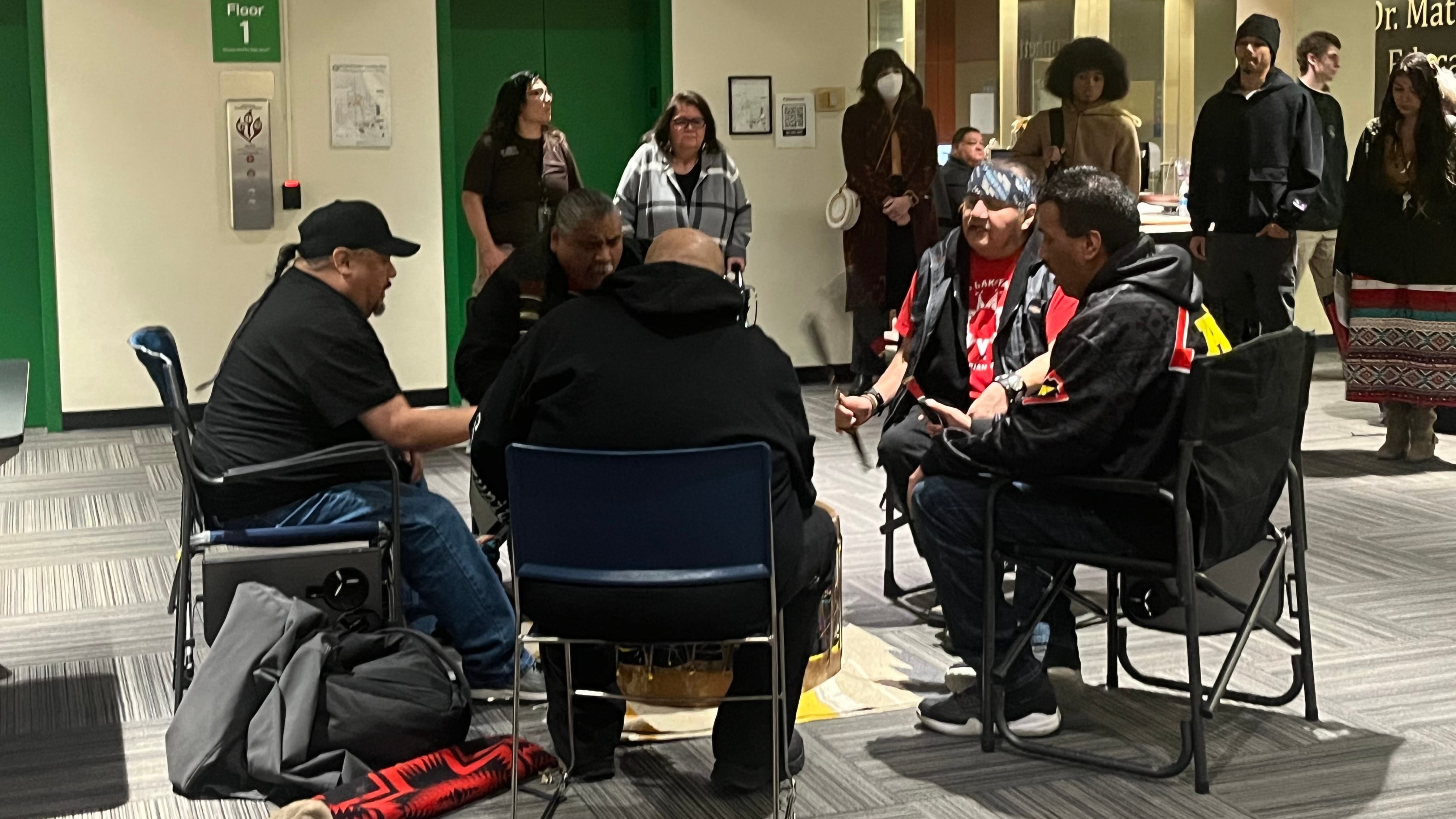At its first meeting of the year Tuesday night, the Portland Public Schools Board referred its $1.83 billion bond package to voters on the May ballot.
The bond will fund remaining high school modernizations, curricula and technology improvements, and work on deferred maintenance projects. It’s the district’s largest package yet. Yet it is not expected to raise property tax rates from the current $2.50 per $1,000 assessed value.
The board was unanimous in referring the bond, although the meeting was upended by a passionate debate over whether to include an additional $40 million for a Native Student Success Center, an idea the board ultimately rejected.
“If voters pass this bond, and I certainly hope they do, it means PPS is going to finalize a promise that it made a decade ago, that all of our PPS high schools will be modernized to the learning spaces,” said board member Andrew Scott, who chaired the facilities committee that worked on the bond.
At 8 pm, the board meeting was still filled with parents and students looking on as board questioning raged. Many had been there since 5 pm, when the board solicited public comments on the proposed package. Most public commenters fell into two subgroups: advocates who opposed slicing budgets for modernizations at Cleveland High School and Ida B. Wells High School, and supporters of the Native Student Success Center.
PPS has tried to set more modest targets for the remaining two high school rebuilds at $340 million each, following realizations that the two modernizations would be among the most expensive in the nation. Many members of the Cleveland and Wells communities expressed concerns that they would lose out on an equitable modernization in comparison with other high schools.
“I want to reiterate that the budget for the high school modernizations has not been reduced,” Scott said. “The budget of $1.15 billion has not decreased and it’s fully available if needed for those schools.”
School Board member Julia Brim-Edwards, whose zone encompasses Cleveland, asked for further reassurance that the schools will receive the same attention as others.
“They are going to be amazing high schools. They are going to be blow-your-mind cool high schools,” said Deborah Kafoury, PPS’s chief of staff. “It is our belief that we can have those schools for a cost that the taxpayers can feel comfortable paying.”
The other major topic of discussion was an amendment Brim-Edwards proposed, which would have added $40 million to the bond’s price tag for the Native Student Success Center.
The center is a proposal that recently reemerged at a Dec. 17 School Board meeting, though it was discussed at some board meetings in spring. Advocates for the project wanted to centralize the resources available to the district’s Native students and create a central gathering space. (While PPS 2024–25 enrollment data says 237 Native students are enrolled districtwide, Superintendent Dr. Kimberlee Armstrong said at Tuesday’s meeting that the actual number is closer to 1,900.)
“This district is failing our Native students miserably,” Norrine Smokey-Smith, an elder on PPS’s Indian Parent Committee, said during public comment. “Fund the Native Center for Student Success. We have waited 173 years for our Native children to be served well in this district. Please do not make us wait any longer.”
But most board members were still uncertain, and ultimately struck the amendment down 5–2. Many did so in part because they did not see how the proposal would be implemented through bond funding, which can only fund facilities and curriculum, not programming or staff. Herman Greene and Brim-Edwards were the only two to vote yes.
Instead, many board members signaled their approval of a report that Armstrong presented earlier in the night. She announced that in partnership with her Racial Equity and Social Justice Team, she’d dedicate funds immediately to an additional 100 hours of tutoring, establish clear K–12 pathways for Native students and hire a tribal liaison for the upcoming academic year.
She added that $1.1 million of the bond’s $56 million curriculum budget would be put toward materials for Native history, culture and contributions.
“What’s been clear to me as I’ve listened to some of the comments is that I don’t know if there’s a shared understanding from the people that I’ve heard from on what’s possible with bond dollars,” Armstrong said.
Board member Michelle DePass, who advocated for the Native Student Success Center at the Dec. 17 board meeting, walked back her support after hearing Armstrong’s proposal. She noted that she didn’t think the solution lay in a building, especially after an independent auditor found that a similar proposal for a Center for Black Student Excellence had not spent a cent and was running well behind schedule. “I would like to see and have hope that we can institute practices that can work with our Native students,” she said.
WW could not immediately reach the Indian Parent Committee for additional comment.
The bond the board ultimately referred remained unchanged from an earlier draft.
The board also reelected board members Eddie Wang and DePass as chair and vice chair, respectively. They ran unopposed and were confirmed unanimously early in the meeting.

